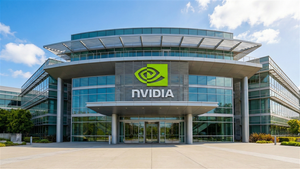How to Use Hidden Content to Get to Position 1 of Google
[London, UK] [May, 2022]— Using hidden content on Google can be risky. As Google so clearly states, ‘hiding text or links in your content to manipulate Google’s search rankings can be seen as deceptive and is a violation of Google’s Webmaster Guidelines.’ However, there are Google-approved and valid methods of ‘hiding’ content that actually improve the user experience, generate an increase in crawled pages and greater user engagement.
According to Google, hiding text can look anything like using white text on a white background, or hiding excessive text and keywords behind an image, minimising font sizes to zero, using CSS to position text off-screen or simply hiding links. The best way to determine whether your site is safe is to measure how easily viewed or accessible the text or links are, and whether this is for visitors and consumers, or solely for the purpose of enhancing your search engine results. Another thing to consider is the importance of your word count and keywords. Adding too many keywords to enhance your count, or simply throwing keywords on a page does make the page look messy and spam. However, this does not mean this is not a ranking factor for the search algorithm. Instead, you can use legitimate ‘hiding’ options such as ‘alt tags’ which give Google information about the page, without impacting the structure or readability.
For this reason, hiding content can sometimes be beneficial and is not always considered to be deceptive or violate Google’s guidelines. However, it’s important that you are following ethical, Google-approved methods of hiding content that will not get you penalised. Some ways of doing so are:
Using ‘Alt’ text attributes to provide descriptive text for images: Using human-readable language in the caption and descriptive text around the image
User reviews for products which are typically up to 100 characters, usually followed by ‘Read more’ anchor text.
Video transcriptions can be hidden to minimise the size of the page
Drop-down text in menus and navigation
Ensuring Javascript is duplicated with a <noscript> tag: If your website includes content that search engines have difficulty processing or accessing, like JavaScript or images, using descriptive text for these items can improve the accessibility of your site. Include a plaintext copy of the text you’re hiding within <noscript> tags. This shows Google you are not trying to hide your text directly from users.
You can also add Schema mark-up codes (also known as semantic vocabulary) on your site. Schema markup is not visible to the searchers, but basically helps search engines understand exactly what your content is trying to deliver from your site which helps search engines bring more informative, valuable and concise results for searchers.
The value of long-tail keywords, James Speyer, head of SEO at The Brains, says:
“We know from data analysis that around 80% of the words Google reads on a page are not actually visible to the user. That’s a LOT of content consumed by Google that helps give the search engine context and decide where that page should go. While a considerable amount of that hidden content is not available to optimise for search, there are plenty of regions that can be utilised for SEO, and in a legitimate way. Unseen code like alt image tags provide a great opportunity to take advantage of additional content space and give search engines more information about what that page is saying, and where it should be place”
James Speyer, Head of SEO, The Brains
About The Brains:
The Brains is a leading SEO agency in London, offering unbeatable ROI and long-term business success. The Brains offers PPC, SEO, content marketing and lead generation services, among others.
For more information please contact:
Jonathan Lemer, Director, The Brains
Email: jonathan@thebrains.co.uk
Telephone: 0333 050 7328
Linkedin: https://www.linkedin.com/company/thebrainsmarketing
Website: https://thebrainsmarketing.co.uk/
Source: https://thenewsfront.com/how-to-use-hidden-content-to-get-to-position-1-of-google/
About The Brains
The Brains is an award-winning digital marketing agency in London. We offer a full range of digital marketing services designed to help you grow faster online and boost ROI.
Contact The Brains
86-90 Paul Street
London
London EC2A 4NE
United Kingdom
0333 050 7328
Website: https://thebrainsmarketing.co.uk/
More News
View More




Recent Quotes
View More
Quotes delayed at least 20 minutes.
By accessing this page, you agree to the Privacy Policy and Terms Of Service.